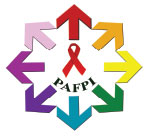“It was not too long ago when an absurd post about a supposedly HIV infected blood contaminated a pineapple and in turn passed the HIV to the person who ate the fruit,” says Joshua T. Formentera, President of Positive Action Foundation Philippines, Inc. (PAFPI).
More than three decades since the discovery of HIV, the populace is still riddled with hordes of misconceptions about HIV and AIDS. Social media is still populated with posts that kindled ignorance that further stigmatize and discriminate people living with HIV (PLHIV). And according to Formentera, the high number of shares and likes only shows that awareness and education drive on HIV and AIDS should be done in the most creative way to reach a large number of Filipinos.
“Millions of Filipinos are on social media. Researches even show that they spend more than 4 hours a day on Facebook and social media channels. So it’s a good tool for us to spread correct information and educate the Filipinos about what is fact and what is fiction about HIV and AIDS.”
He further explains that HIV misconceptions like using utensils and bathrooms used by a PLHIV will not pass on the virus. Spittle and kagat ng lamok (mosquito bites) will not either. However, Formentera laments that many Filipinos are still left unaware about what HIV and how a person contracts HIV. With this, he stresses the need to hype the information drive on social media, especially Facebook.
Formentera shares that PAFPI’s official Facebook page and the HIV Secret Files are ways to reach netizens and clear what’s fact and what is fiction about HIV.
Important Facts to Remember About HIV
Formentera shares that one of the misconceptions revolves around the mode of HIV transmission. “A handshake, a hug, sharing a cup, using the same toilet seat, or sharing a food with a person living with HIV will not in any way transmit the virus,” he says.
He further explains that the continuous misconceptions about the mode of HIV transmission fueled misinformation that can trigger stigma and discrimination. Hence, the stresses the importance of knowing that the transmission of HIV is through the body fluids like semen, vaginal and rectal secretions, blood, and breast milk. However, the fluids should transmitted into the body in specific ways like blood transfusion or for the blood to be directly injected into the bloodstream using a syringe or needle. Another way is through sexual intercourse that allows direct contact with a mucous member like semen, vaginal and rectal secretions.
Another misconception is that PLHIVs can’t live a normal life. “Well, it is just a matter of perspective because a normal life for a person may not be normal for the others. But generally, a person living with HIV can live a life no different from the rest of the populace,” he explains and adds, “He can work, play, love. Nobody is restricting a PLHIV to do what he wants. But a PLHIV must also need to be responsible in taking care of his / her self.”
With the growing rate of new HIV cases every day, netizens should be proactive in knowing the truth about HIV as this will help dispel all misconceptions and ignorance surrounding the virus,” Formentera ends.
